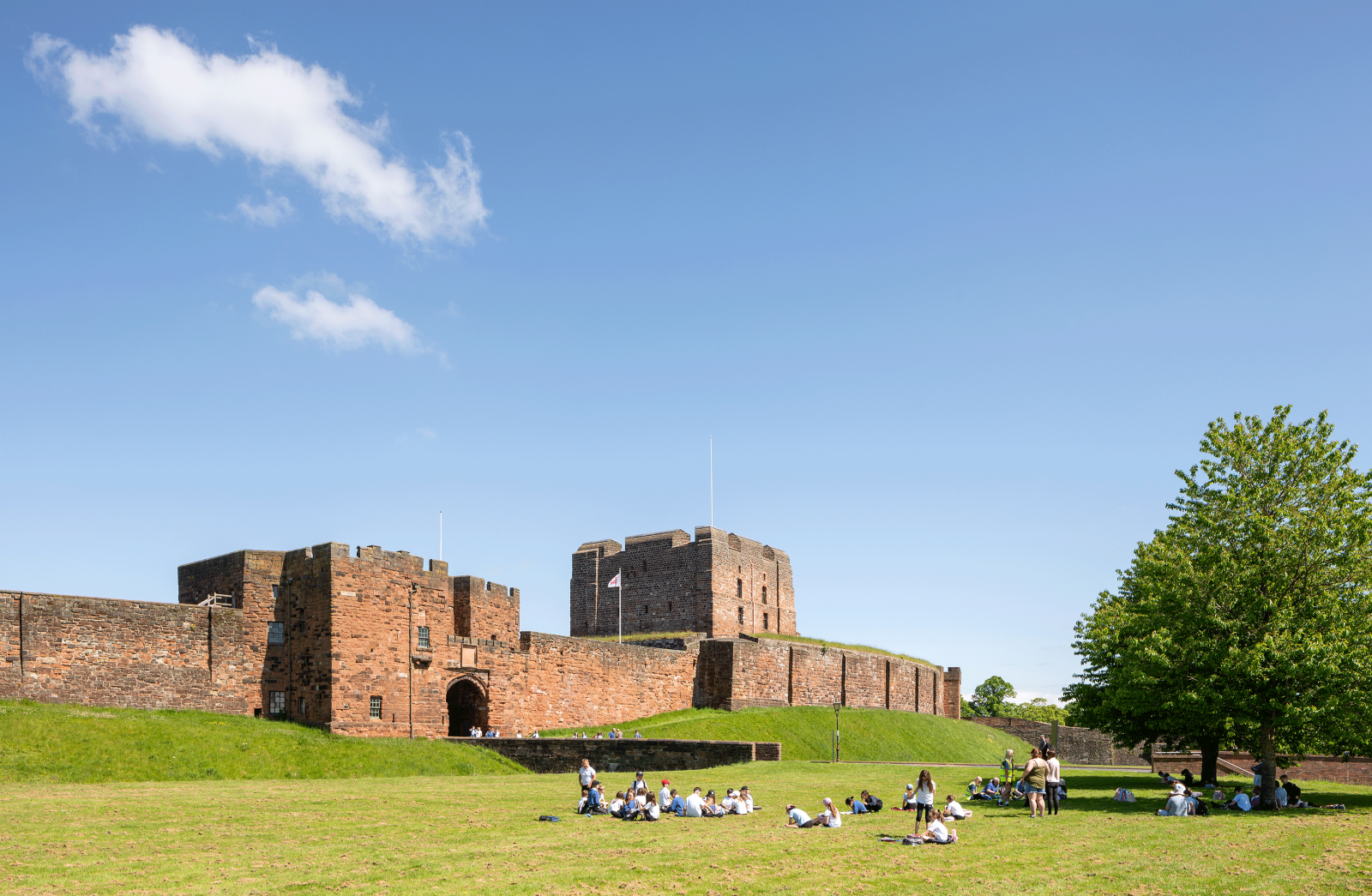
Introducing Carlisle Castle
Carlisle Castle is a grade I listed Scheduled Monument that represents more than nine centuries of military and royal activity and has functioned as a working fortress well into living memory.
The castle's history reflects its position near the borders between England and Scotland and is the most besieged site in the British Isles. Its occupants have included the Scottish King, David I, during a long period of conflict between the two nations, and Mary Queen of Scots, who spent the first two months of her nearly nineteen years in captivity here.
Buttress has completed a conservation project to the 900-year-old keep. This looks holistically at the building and is part of a wider project by English Heritage, that will help prevent further water ingress to the structure and safeguard priceless prisoner carvings from the 15th century from damage.

Conservation works
The largest and most impressive building within the castle complex is the keep which dates from the 12th century. This structure has been subject to extensive moisture ingress observed internally at the third-floor level, and extending down into the lower cells. A range of survey techniques including thermal imaging and environmental monitoring were explored to assess the extent of the damage, enabling us to develop an appropriate strategy for repair.
The source of the ingress was found to be the poor condition of the roof and wall cappings, with water migrating vertically through the wall core, and causing damage internally, most significantly across the prisoner carvings.
To address these issues Buttress were appointed to look holistically at the repairs and to carry out comprehensive remedial repair work to the parapet wall, descale the exterior walls, and replace the hard cementitious mortars with lime. We created a replacement roof with concealed permeable drainage mat and capped the stone revetments with lead to prevent further water ingress to the soft stone. These works were supplemented with improvements to the access portal and fabric repair works extending across the exterior envelope of the keep, including descaling, stone replacement, re-dressing, and repointing using a hot lime mix.
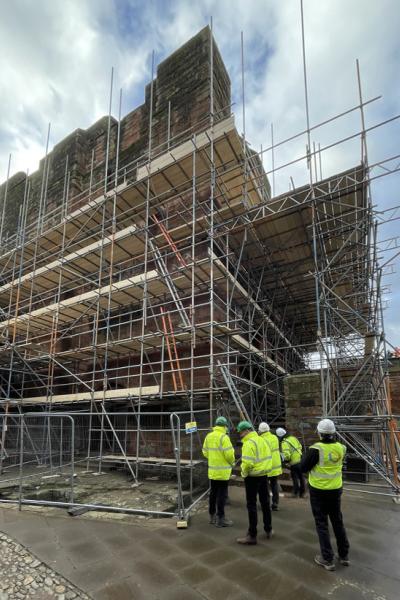
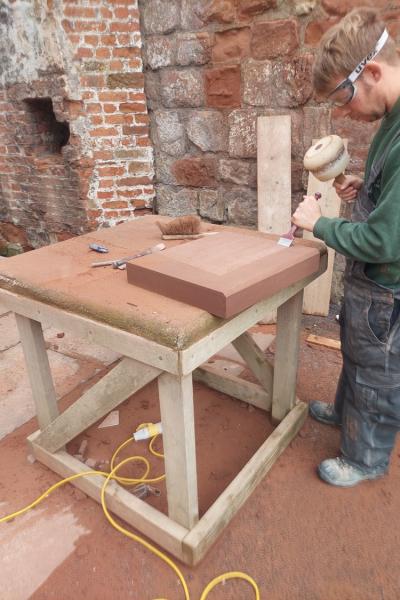
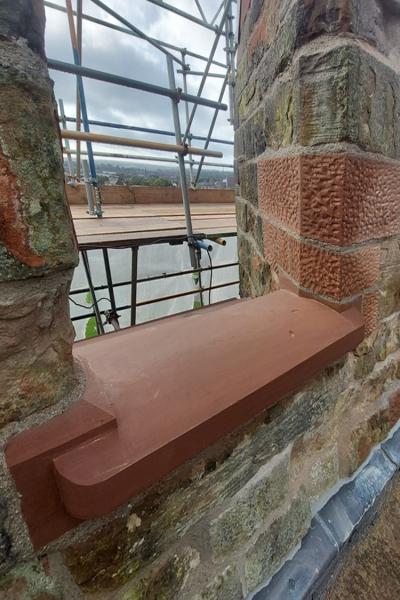
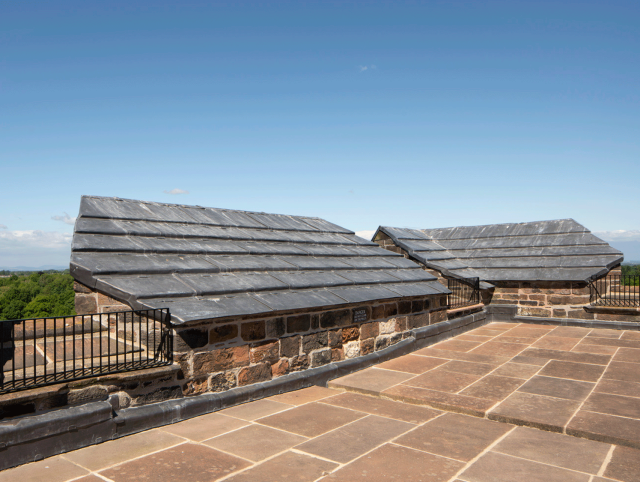
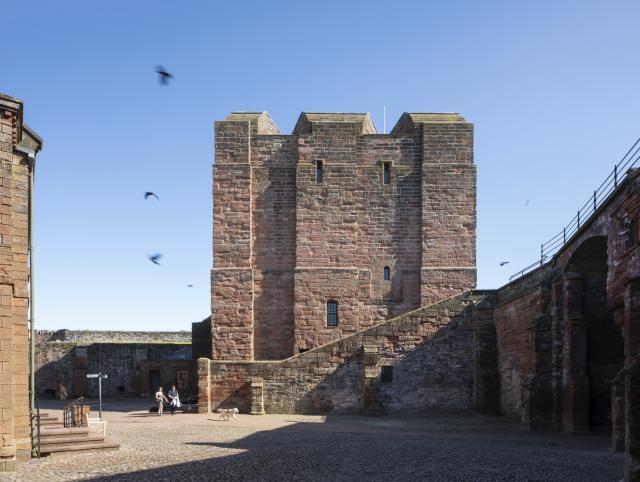
The 15th century carvings
The carvings in the castle keep are found in a tiny room between two cells. Previously thought to be prisoner carvings from the 15th century they are now thought to be the work of bored prison guards. There are carvings of animals, George and the dragon, and a fox preaching to some chickens – a 500-year-old warning not to trust people in authority. Others are emblems of families of status in the area – the Dacre family and the Percy family, for example.
Our project has run parallel to English Heritage's project to painstakingly clean and reveal the carvings, allowing them to be seen more clearly than they have been for generations.

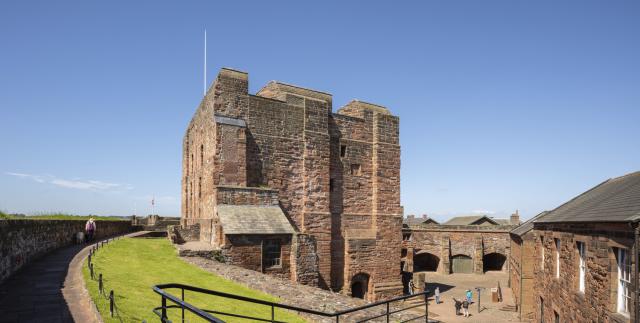
Heritage skills days
Whilst the conservation works were ongoing we took the opportunity to give a look behind the scenes and to create a number of heritage skills days for interested groups and individuals. We facilitated a number of days drawing upon the skills and experience of our project team. We led tours of the site explaining the conservation practices being used and why these are relevant to a building of the age, construction, and significance of Carlisle Castle, and contractors Historic Property Restoration (HPR) led demonstrations in stone carving.
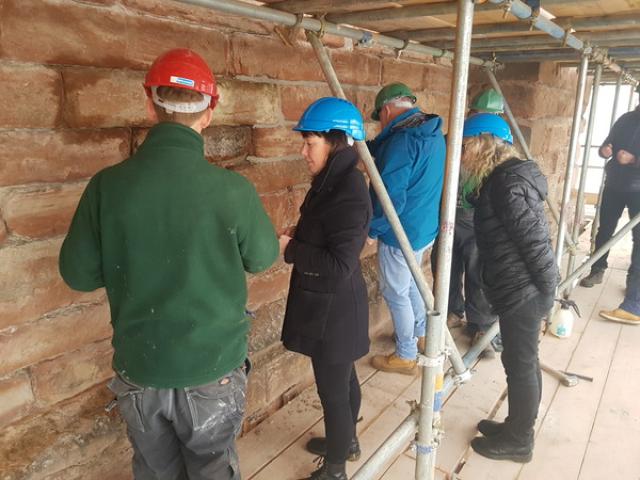

Edward Kepczyk
Edward specialises in the conservation, informed repair, and creative reuse of secular and ecclesiastical buildings, including some of the country’s most significant historic sites.
Alex Scrimshaw
Alex is an experienced architectural technologist working within the practice’s historic buildings team.

